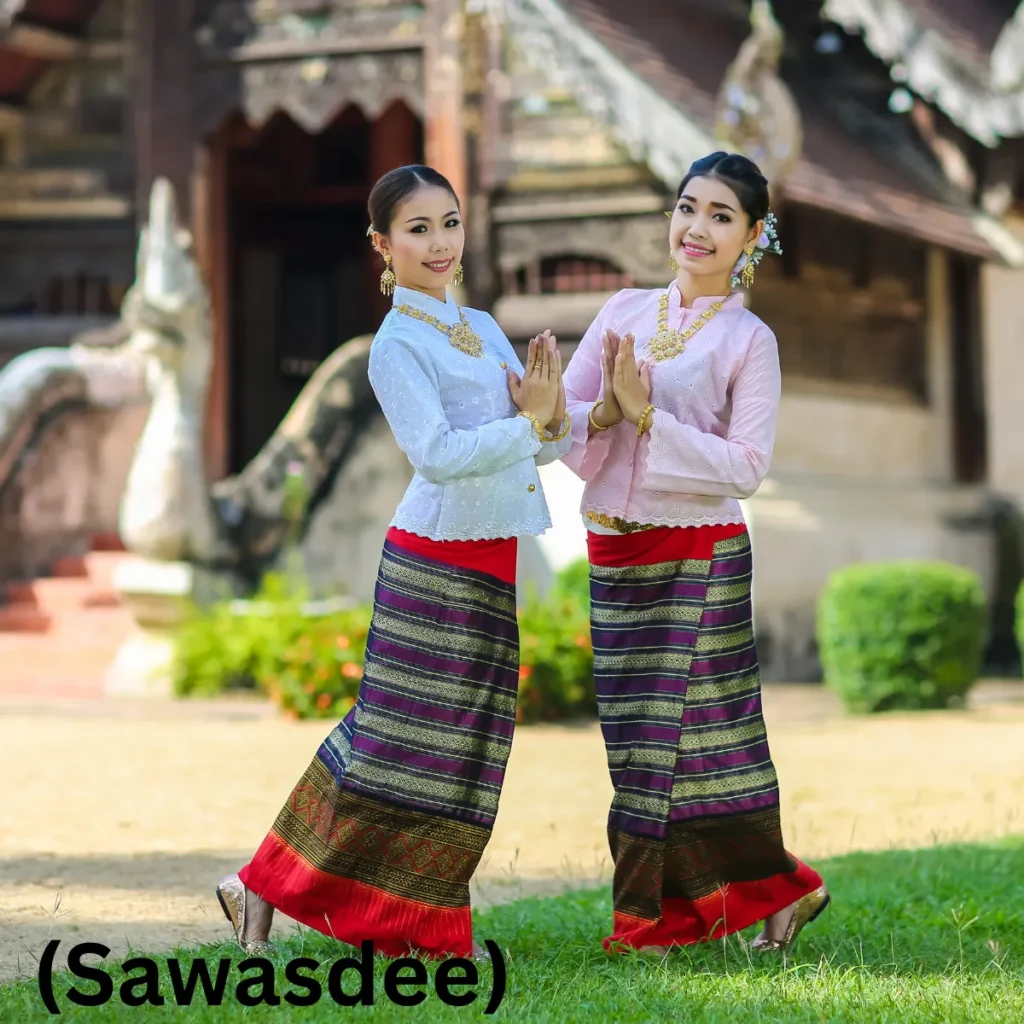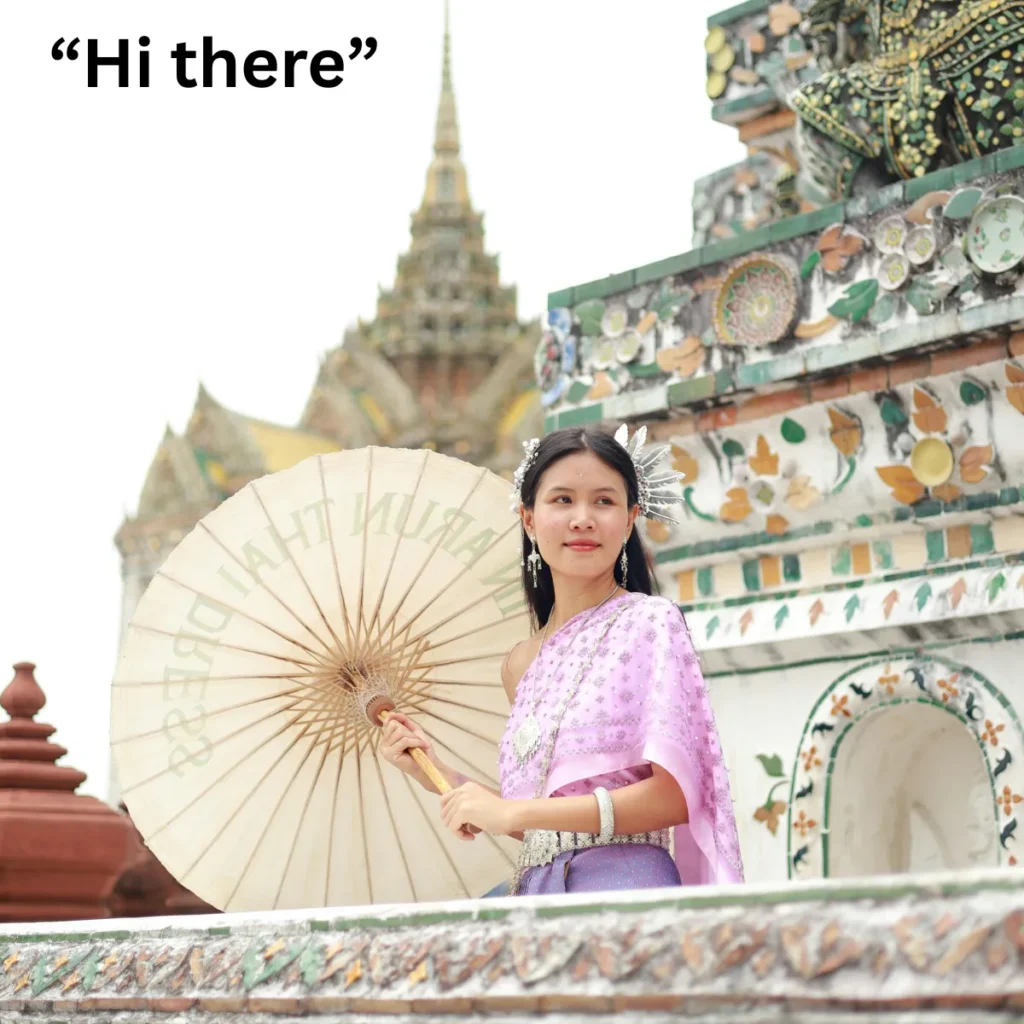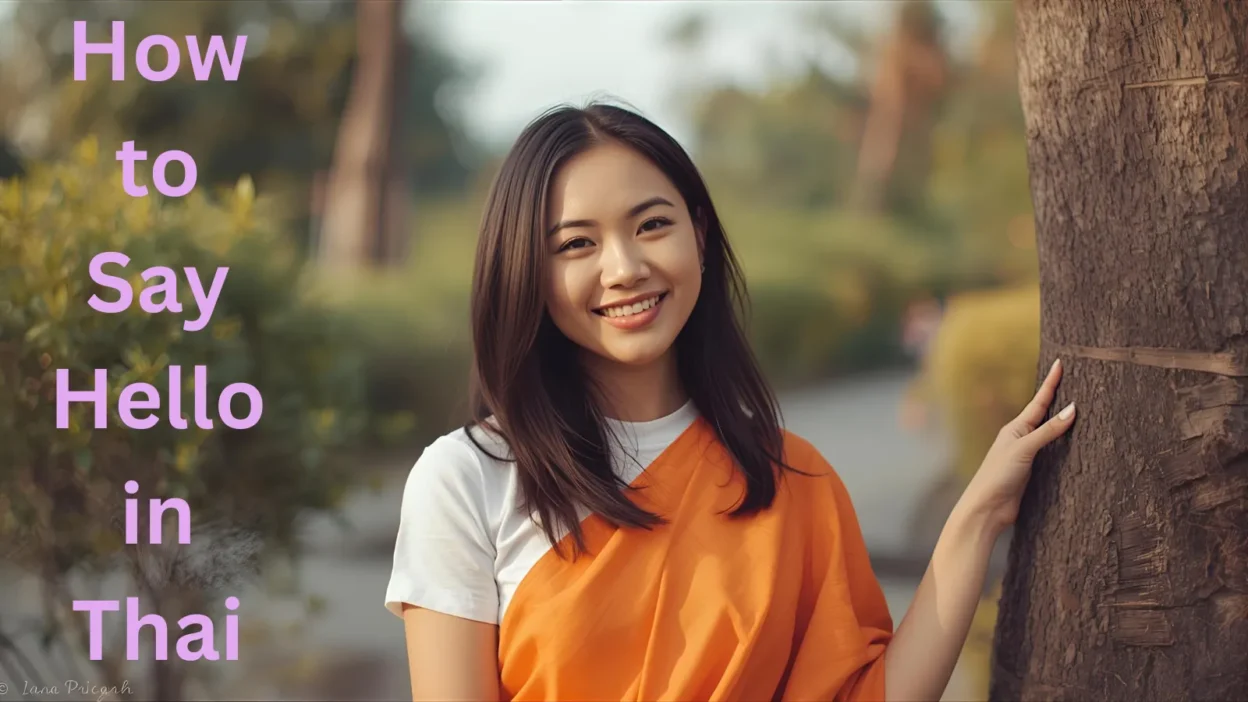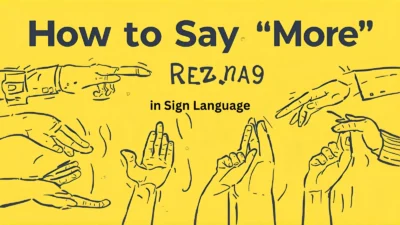How to Say Hello in Thai is one of the most important phrases to learn if you’re starting with the Thai language. Greetings in Thai change depending on gender and level of politeness, so using the right word makes a big difference. You can learn how to say hello in Thai to a girl by adding “sawasdee kha” (for female speakers) and how to say hello in Thai to a boy with “sawasdee khrap” (for male speakers).
Mastering the correct hello in Thai pronunciation will make you sound more authentic, polite, and natural in every conversation.
Say Hello in Thai
Let’s dive into 15 different ways to say hello in Thai, complete with real conversation examples and cultural notes to help you sound authentic and respectful.
15 Phrases – How to Say Hello in Thai
| # | English Phrase | Thai Greeting | Pronunciation |
|---|---|---|---|
| 1 | Hello (general) | สวัสดี | sah-wah-dee |
| 2 | Hello (male speaker) | สวัสดีครับ | sah-wah-dee khrap |
| 3 | Hello (female speaker) | สวัสดีค่ะ | sah-wah-dee kha |
| 4 | Hi (informal) | หวัดดี | wat-dee |
| 5 | Good morning | อรุณสวัสดิ์ | a-roon sah-wah-dee |
| 6 | Good afternoon | สวัสดีตอนบ่าย | sah-wah-dee ton bai |
| 7 | Good evening | สวัสดีตอนเย็น | sah-wah-dee ton yen |
| 8 | Good night (as greeting) | ราตรีสวัสดิ์ | rah-tree sah-wah-dee |
| 9 | Hello everyone | สวัสดีทุกคน | sah-wah-dee took kon |
| 10 | Long time no see | ไม่เจอกันนานเลย | mai jer gan naan loey |
| 11 | How are you? (as hello) | สบายดีไหม | sah-bai dee mai |
| 12 | Hello teacher | สวัสดีครู | sah-wah-dee kroo |
| 13 | Hello politely (formal) | สวัสดีอย่างสุภาพ | sah-wah-dee yahng soo-pahp |
| 14 | Hello friend | หวัดดีเพื่อน | wat-dee pheuan |
| 15 | Welcome (as hello) | ยินดีต้อนรับ | yin-dee ton-rap |
1. สวัสดี (Sawasdee)

Origin:
The most standard Thai greeting, used in all situations. Introduced in the 1930s as part of a cultural modernization effort.
Example:
👤 User A: สวัสดีครับ (Sawasdee kráp).
👤 User B: สวัสดีค่ะ (Sawasdee khâ).
Use: Formal and polite; used with both strangers and acquaintances.
2. หวัดดี (Wat Dee)
Origin:
A shortened, casual version of “Sawasdee,” often used among close friends or peers.
Example:
👤 User A: หวัดดีจ้า!
👤 User B: หวัดดี! ไปไหนมา?
Use: Informal, friendly.
3. สวัสดีตอนเช้า (Sawasdee Ton Chao) – “Good morning”

Origin:
Combines “Sawasdee” with the phrase for “morning,” used in polite conversation.
Example:
👤 User A: สวัสดีตอนเช้าครับ!
👤 User B: สวัสดีตอนเช้าค่ะ! วันนี้อากาศดีนะ
Use: Formal, used in the morning.
4. สวัสดีตอนบ่าย (Sawasdee Ton Bai) – “Good afternoon”
Origin:
This phrase is a polite, modern construction widely used in Thailand today, blending traditional Sanskrit influence (sawasdee) with native Thai time expressions (ton bai).
Example:
👤 User A: สวัสดีตอนบ่ายค่ะ คุณเป็นยังไงบ้าง?
👤 User B: สวัสดีค่ะ กำลังพักอยู่เลยค่ะ
Use: Formal greeting after noon.
5. สวัสดีตอนเย็น (Sawasdee Ton Yen) – “Good evening”

Origin:
This greeting combines a Sanskrit-influenced word (sawasdee) with a native Thai time expression (ton yen), making it both modern and culturally rooted.
Example:
👤 User A: สวัสดีตอนเย็นครับ กลับบ้านหรือยัง?
👤 User B: ยังเลย เพิ่งจะเลิกงานค่ะ
Use: Polite greeting for late afternoon/evening.
6. ว่าไง (Wâ ngai) – “What’s up?”
Origin:
Slang greeting used by Thai teens and young adults; literally means “What’s up?”
Example:
👤 User A: เฮ้ ว่าไง?
👤 User B: สบายดี นายล่ะ?
Use: Informal, playful.
7. โย่ (Yo!)
Origin:
A borrowed, urban-style greeting, similar to English “Yo,” used by Thai youth.
Example:
👤 User A: โย่! เป็นไงบ้างเพื่อน?
👤 User B: โย่! ก็โอเคอะ
Use: Very informal, trendy.
8. เฮ้ (Hey!)
Origin:
Another borrowed slang greeting from English; casual and used in friendly circles.
Example:
👤 User A: เฮ้! ไม่เจอกันนานเลยนะ
👤 User B: จริงด้วย! คิดถึงจังเลย
Use: Relaxed, urban Thai-English mix.
9. เป็นไงบ้าง (Pen ngai baang) – “How are things?”
Origin:
เป็นไงบ้าง (Pen ngai baang) comes from เป็น (to be) + ไง (how, casual) + บ้าง (a bit/general), forming the informal Thai greeting “How are things?”
Example:
👤 User A: เป็นไงบ้างช่วงนี้?
👤 User B: งานยุ่งนิดหน่อย แต่ก็โอเคนะ
Use: Friendly, often follows the initial greeting.
10. ดีจ้า (Dee Jaa) – “Hi there” (female speaker)

Origin:
ดีจ้า (Dee Jaa) comes from ดี (dee – good) + จ้า (jaa – a soft, friendly particle often used by female speakers), creating a warm and casual Thai greeting meaning “Hi there.”
Example:
👤 User A: ดีจ้า ไปกินข้าวกันไหม?
👤 User B: ดีจ้า! ไปสิ
Use: Cute, feminine, informal.
11. หวัดดีครับเพื่อน (Wat Dee Khráp Phuean) – “Hey buddy!”
Example:
👤 User A: หวัดดีครับเพื่อน! สบายดีไหม?
👤 User B: โอ้ ดีเลย นายล่ะ?
Use: Casual male-to-male greeting.
12. ไปไหนมา (Bpai nai maa) – “Where have you been?”
Origin:
Though it sounds like a question, it’s often used as a greeting between close friends.
Example:
👤 User A: เฮ้! ไปไหนมาน่ะ?
👤 User B: แวะไปกินข้าวมา
Use: Friendly, informal.
13. กินข้าวรึยัง (Gin kâao rue yang?) – “Have you eaten?”
Origin:
A culturally rooted Thai greeting showing care, often used instead of “how are you?”
Example:
👤 User A: กินข้าวรึยัง?
👤 User B: ยังเลย หิวมาก
Use: Warm, caring greeting, especially with people you know.
14. เจอกันอีกแล้ว (Jer gan eek laew) – “We meet again!”
Example:
👤 User A: เจอกันอีกแล้วนะ! บังเอิญจัง
👤 User B: ใช่เลย ดีใจที่เจอ
Use: Friendly, slightly playful.
15. ยินดีที่ได้เจอ (Yin dee tee dai jer) – “Nice to see you”
Origin:
More polite than casual greetings, used when meeting someone with respect or after a long time.
Example:
👤 User A: ยินดีที่ได้เจอครับ
👤 User B: เช่นกันค่ะ
Use: Formal or semi-formal, respectful.
FAQs
1. What is the most common way to say hello in Thai?
The most common way is สวัสดี (Sawasdee), used in almost any situation.
2. Is there a polite way to say hello in Thai?
Yes! Adding ครับ (khrap) for men or ค่ะ (kha) for women makes it polite: สวัสดีครับ / สวัสดีค่ะ.
3. Can I use hello with friends casually?
Yes! Close friends often just say หวัดดี (Wadi), a casual, informal version of hello.
4. How do I greet someone older or respected in Thai?
Use สวัสดีครับ / สวัสดีค่ะ with a slight bow, called a wai, to show respect.
5. How do kids usually say hello in Thailand?
Kids often mimic adults and say สวัสดีครับ / สวัสดีค่ะ, or simply wave and say หวัดดี.
6. Can I say hello on the phone in Thai?
Yes! You can answer the phone with สวัสดีครับ / สวัสดีค่ะ or just ฮัลโหล (Hello).
7. Are there regional differences in saying hello in Thailand?
Most regions use สวัสดี, but in the north, some people may greet with local dialects in informal settings.
8. Can body language be used with hello?
Yes! Combining wai (hands together with slight bow) while saying สวัสดี shows politeness and friendliness.
9. How do I greet a group of people in Thai?
Say สวัสดีทุกคน (Sawasdee thuk khon), meaning “Hello everyone,” politely addressing the group.
10. Are there playful or slang ways to say hello?
Among friends, younger people may say ไง (Nai) meaning “Hey” or use emojis in texts.
Conclusion:
Learning how to say hello in Thai is more than just a greeting—it’s a way to show respect and cultural awareness. Whether you’re greeting a girl with sawasdee kha, a boy with sawasdee khrap, or practicing polite pronunciation, using the right phrase helps you connect naturally with Thai speakers.



